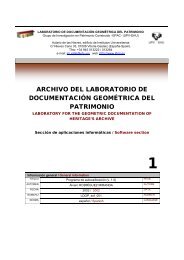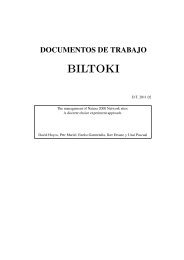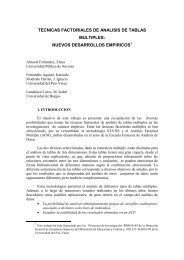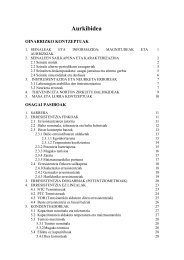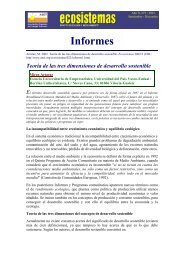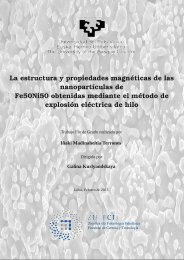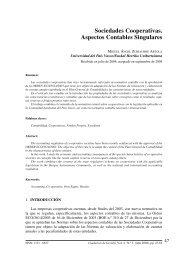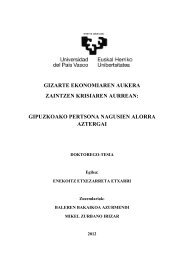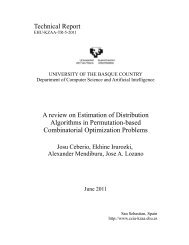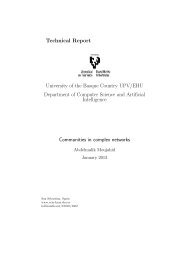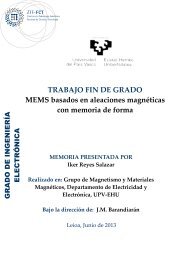Ï - ADDI
Ï - ADDI
Ï - ADDI
- No tags were found...
You also want an ePaper? Increase the reach of your titles
YUMPU automatically turns print PDFs into web optimized ePapers that Google loves.
5.1. A general spin-strain phase diagram for a monovacancy in graphene 107Figure 5.1: (A) Graphene with vacancies under an isotropic compression of 1.2%. As an example we use the10×10 unit cell (highlighted). The inset shows the geometry of the vacancies and the atomic labels. The localbending at the vacancies is described by the angle θ 12 between the pentagon and the plane defined by three Catoms around the vacancy, i.e. two equivalent atoms labeled 1 and a third atom labeled 2. Note the ripplingof the graphene sheet with the vacancies at the saddle points. (B) A different vacancy structure for a highercompression slightly under 3%. It has two distorted hexagons and pentagons, while the central C atom shows asp 3 hybridization.reconstructed vacancies. The vacancy breaks the hexagonal symmetry of graphene with theirgoggles-pentagon structure and thus play a key role in determining the shape and symmetryof the global deformation patterns of graphene.We simultaneously characterise the local curvature at the vacancies and the height of atom2 above the local tangent-plane in terms of the bending angle θ 12 , as defined in Figure 5.1.In Figure 5.2B, we plot the bending angle for both defective and pristine graphene. Undermoderate compression (1-2%), the local bending angle for defective graphene is about threetimes greater than that of pristine graphene and the graphene rippling is clearly favoured bythe presence of the vacancies. The dependence of θ 12 on the size of the supercell, as shown



